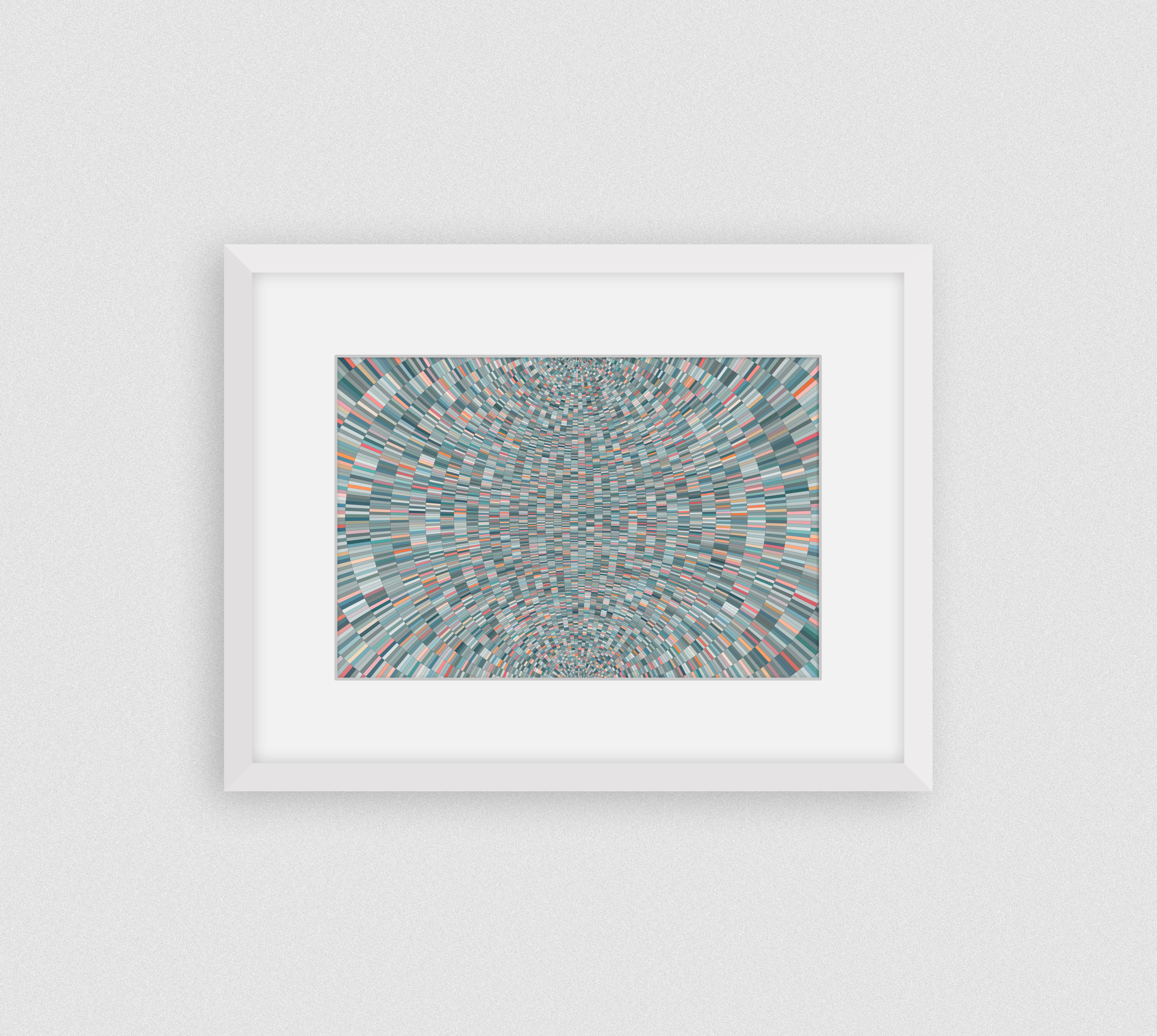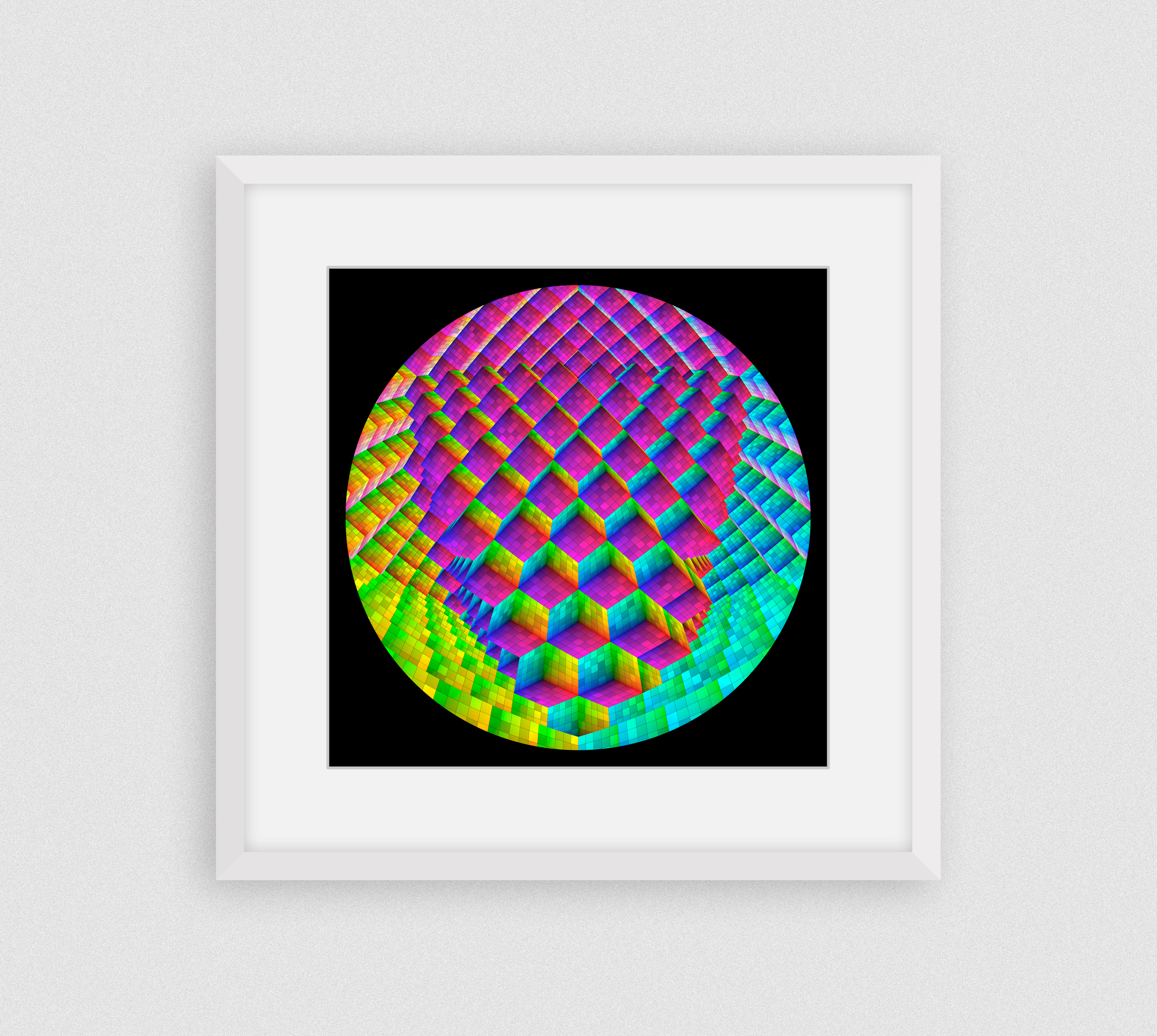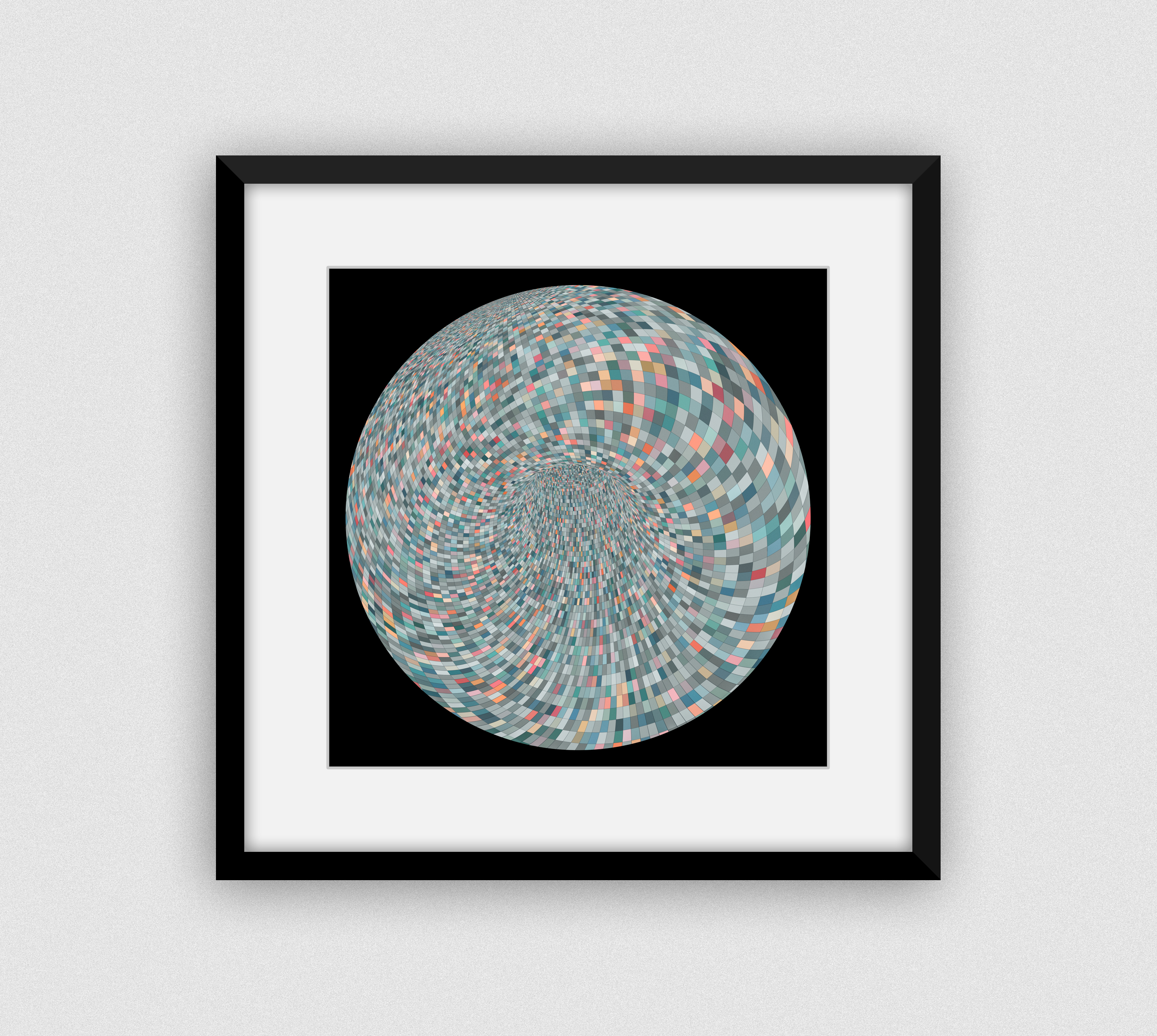SUB.DIVISION Series
March 2016 ––Sub.Division is a printed series of Perceptual Landscapes where graphic complexity emerges from the structure of simplistic three-dimensional forms. The goal was to generate perceived movement and pattern by taking basic primitive shapes and subdividing them into various levels of geometric intricacy. These subdivided terrains were then assigned generative color and pattern to define form and structure in flat-shaded renders, creating unique perceptual interpretations through the timeless principles of optical art and graphic design.
The series was made with love utilizing some unconventional imaging techniques from Autodesk Maya, the fantastic procedural plugin MASH and the amazing Solid-Angle Arnold renderer. These somewhat obscure and experimental techniques are outlined in thorough detail below in the process section. Munko wanted to take this unconventional approach to image-making and generate as many aesthetics and forms available to him during the process, which is why this resulting SubDivision study is so thoroughly explored and documented.
The series was made with love utilizing some unconventional imaging techniques from Autodesk Maya, the fantastic procedural plugin MASH and the amazing Solid-Angle Arnold renderer. These somewhat obscure and experimental techniques are outlined in thorough detail below in the process section. Munko wanted to take this unconventional approach to image-making and generate as many aesthetics and forms available to him during the process, which is why this resulting SubDivision study is so thoroughly explored and documented.


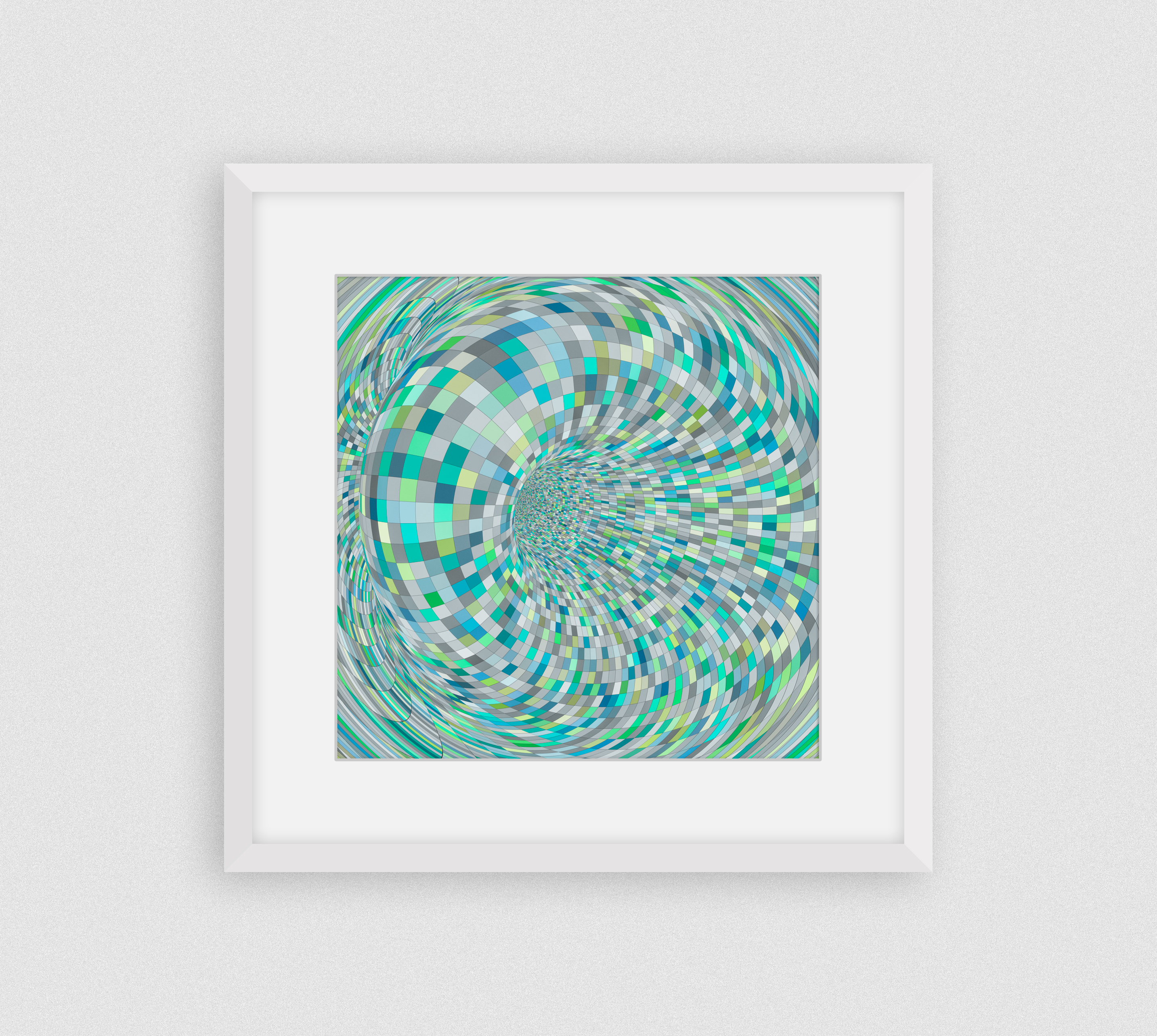

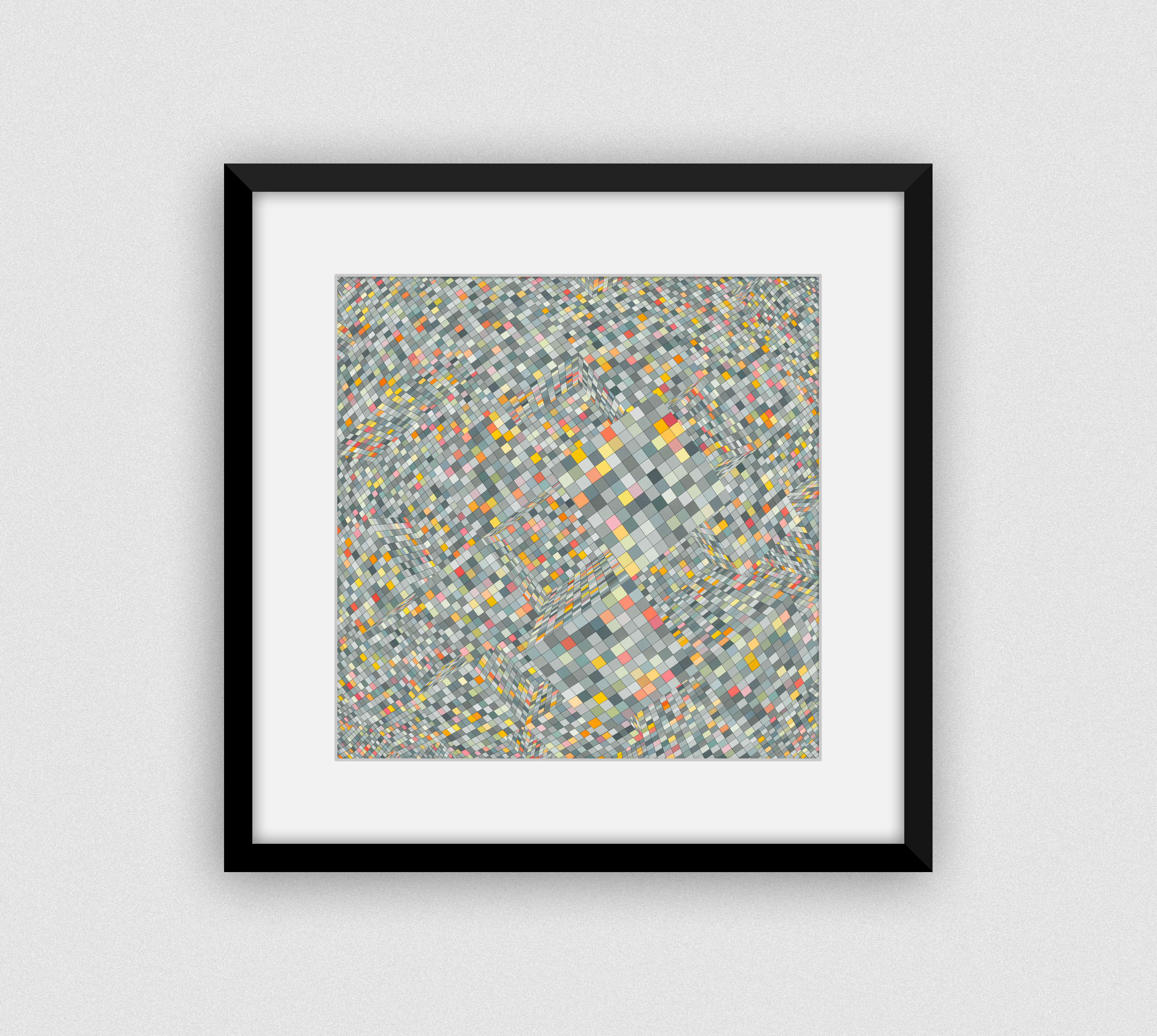
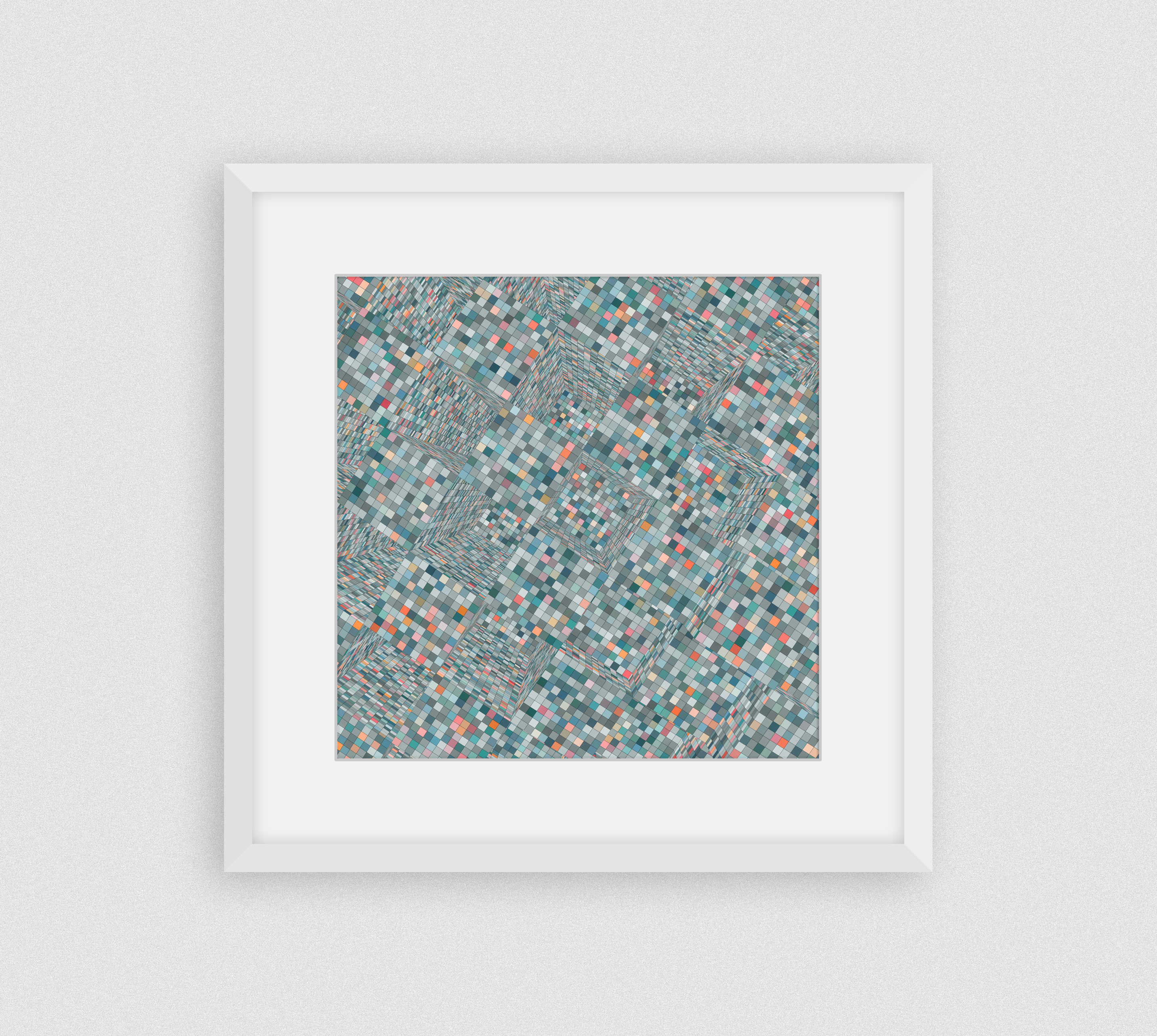




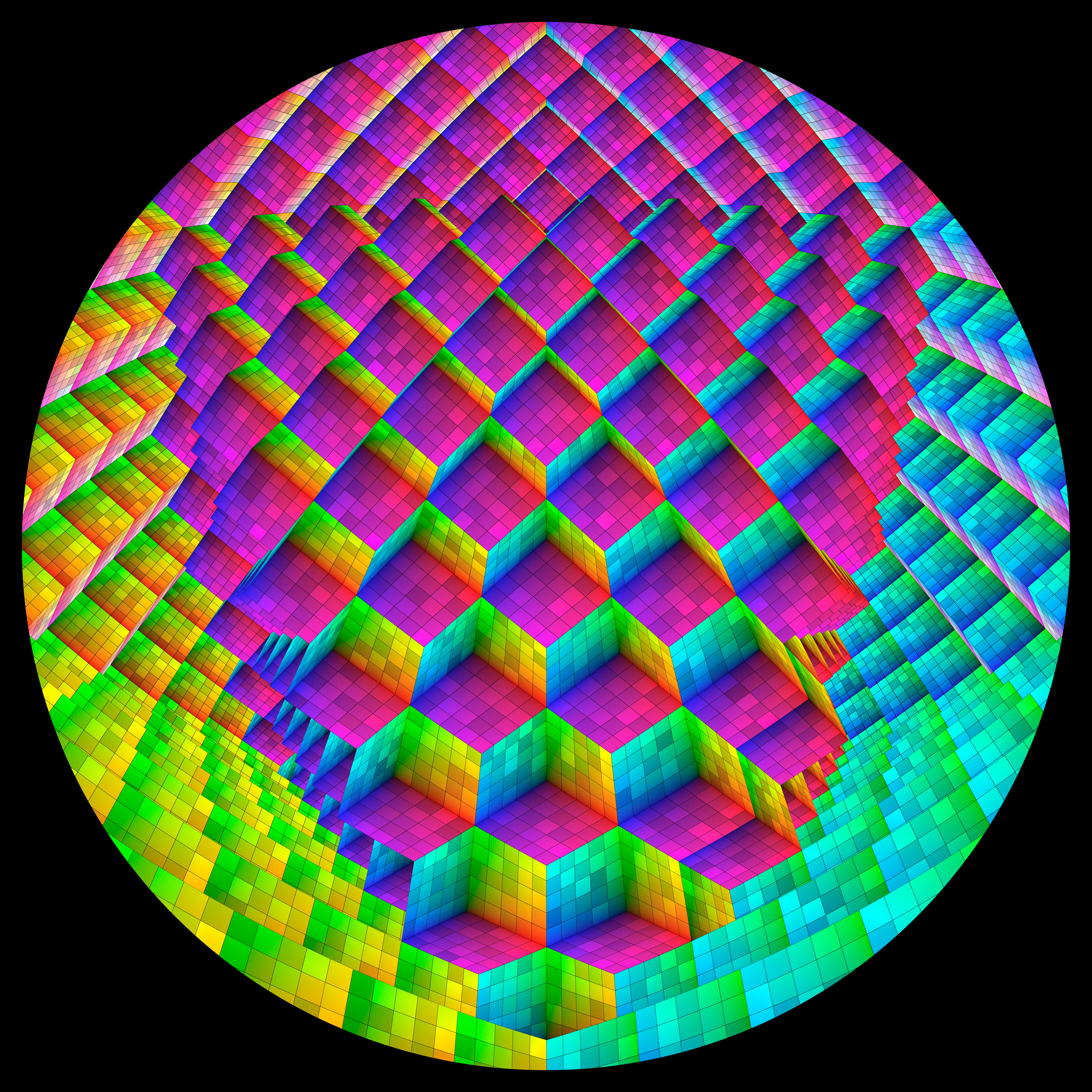



TORUS x1682
Buy Print at CinaArt.com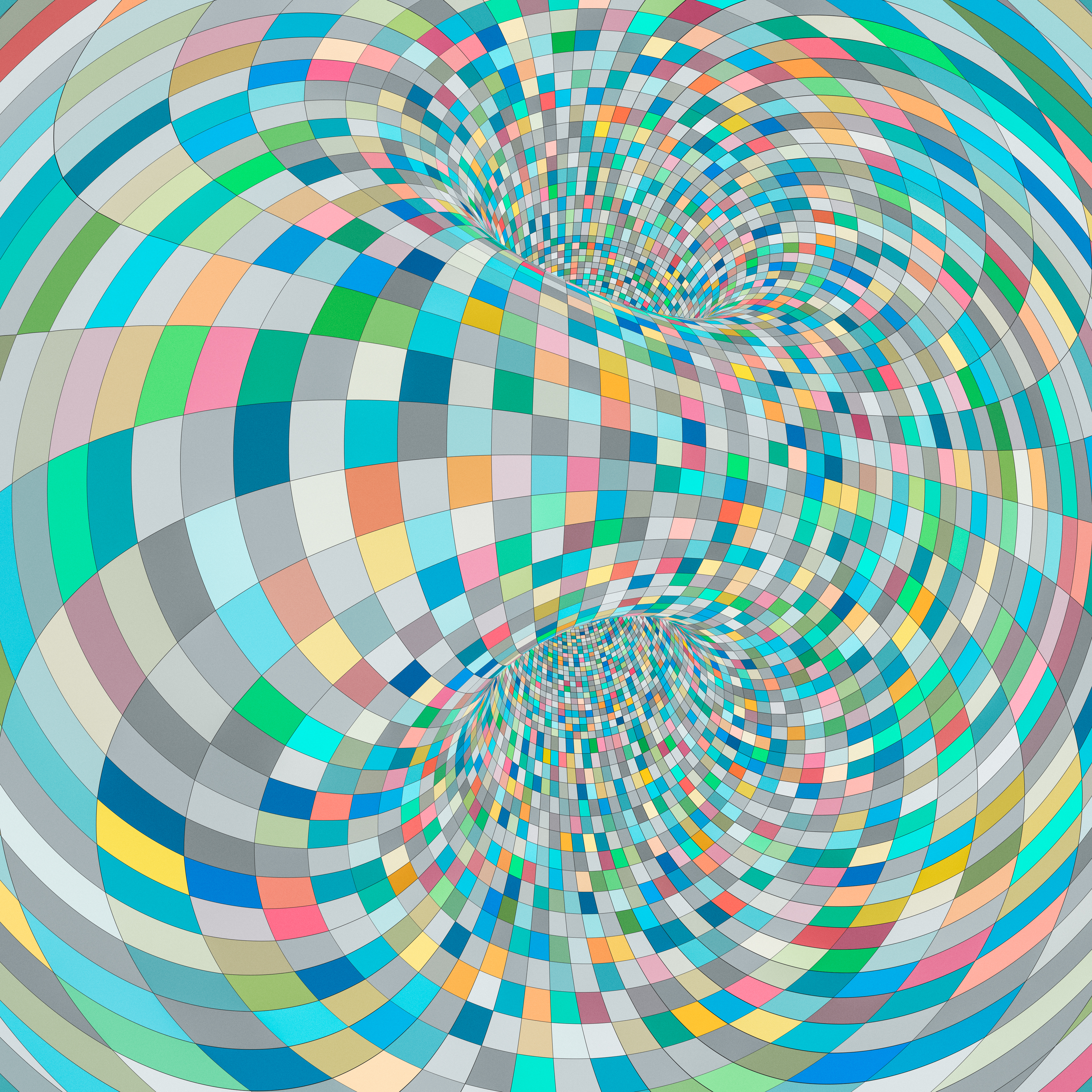
TORUS x2049
Buy Print at CinaArt.com
TORUS x2616
Buy Print at CinaArt.com
TORUS x5669
Buy Print at CinaArt.com




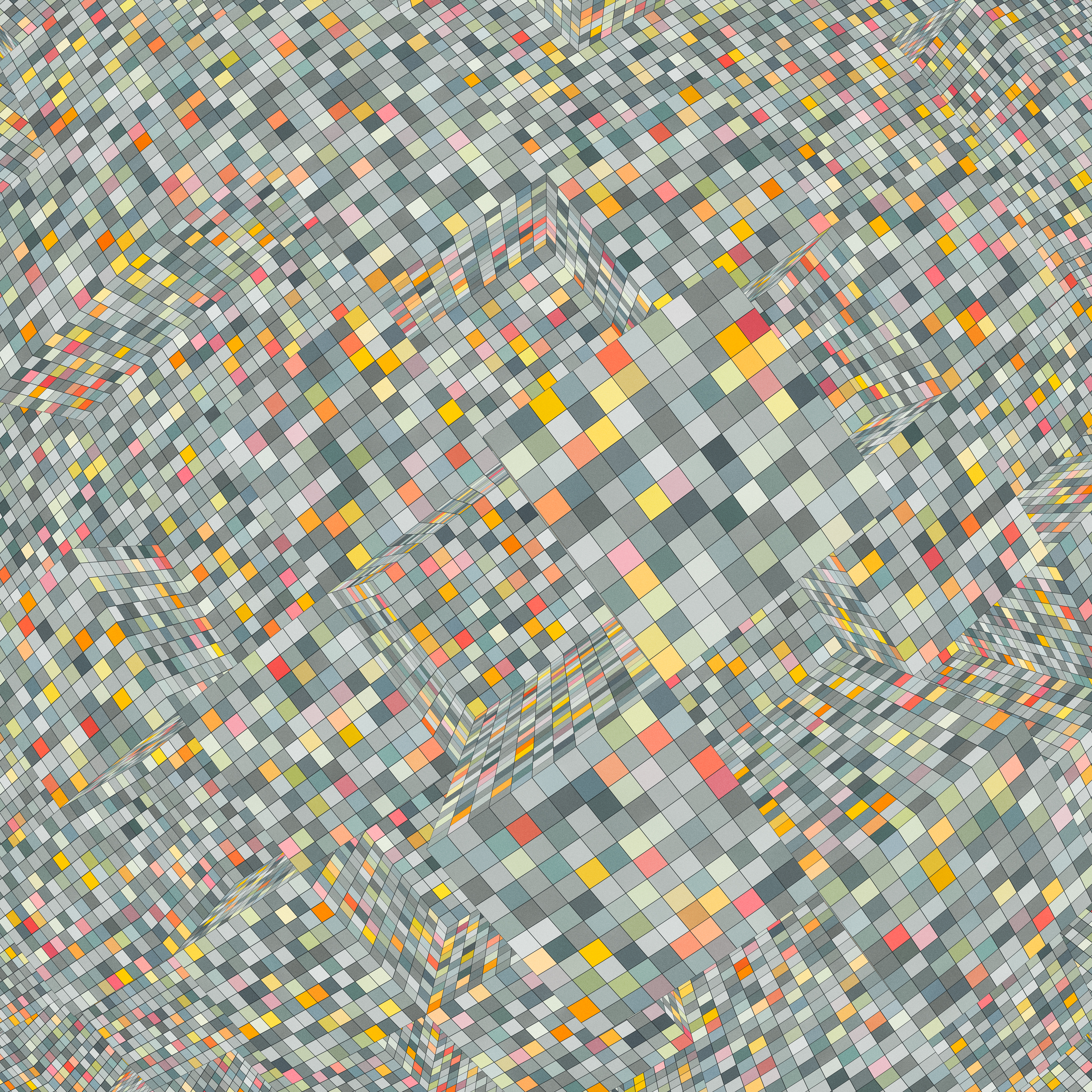



POLAR x4280
Buy Print at CinaArt.com
POLAR x9749
Buy Print at CinaArt.com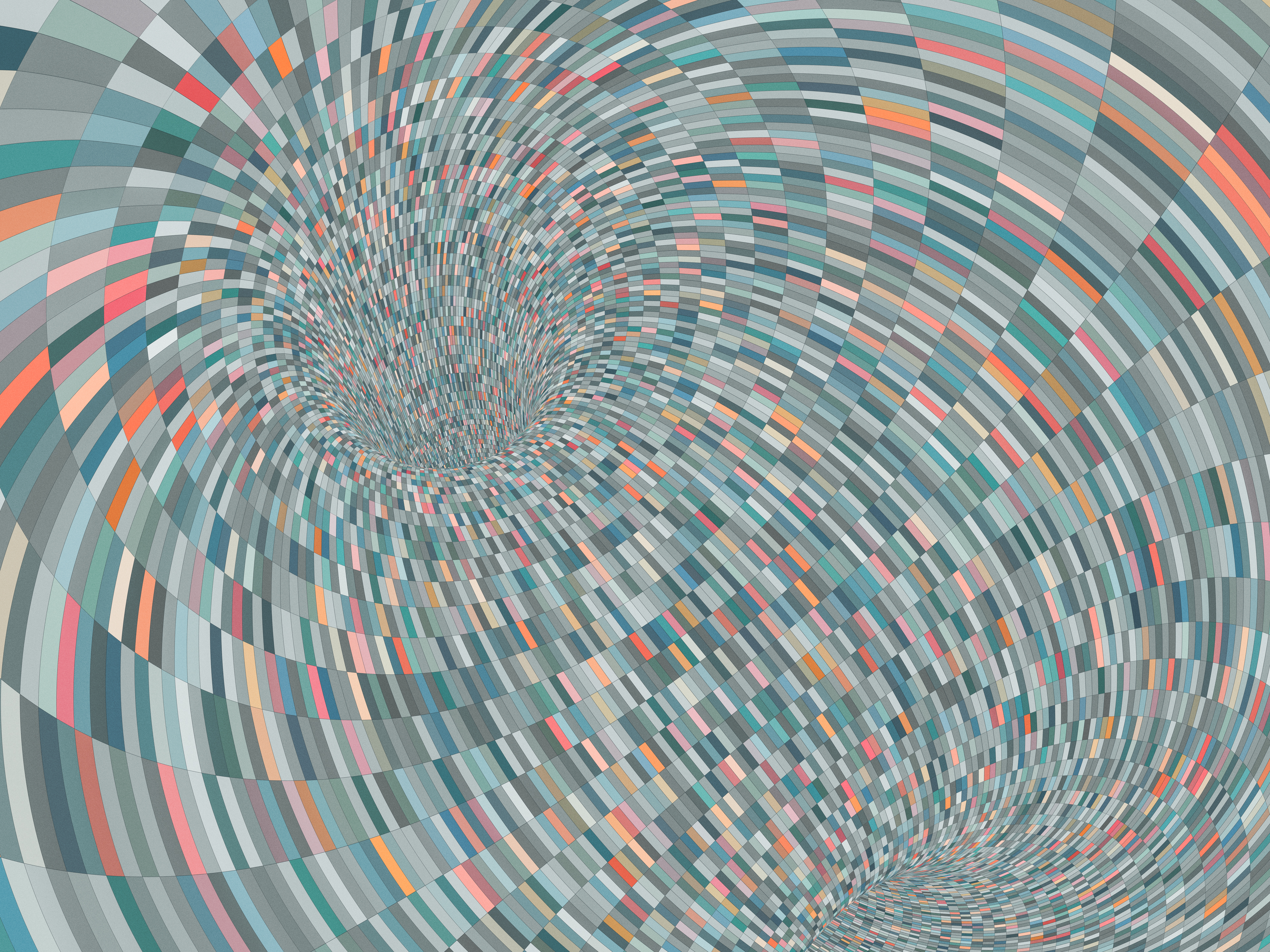
SPHERE x1649
Buy Print at CinaArt.com
SPHERE x7707
Buy Print at CinaArt.com
The Process
–– 02
Principles of SubDivision: This entire exercise was spawned as a result of creatively SubDividing geometric forms during some freestyling. It was inspiring to muse about how to create depth and recursive form in graphic, flat-shaded renders - that was the challenge. So the first steps were creating the geometric forms, some of which were very simple primitives, which gradually grew in complexity using some favorite generative modeling tools.
These various SubDivided forms were then applied special shaders which defined color and perspective within the geometry, which were then warped further via creative lensing and other optical techniques using the Arnold Renderer. But at the foundation of this exercise was the aesthetic ramifications of SubDividing geometric forms - and how these increased divisions in the geometry affected the resulting design language in the series.
These various SubDivided forms were then applied special shaders which defined color and perspective within the geometry, which were then warped further via creative lensing and other optical techniques using the Arnold Renderer. But at the foundation of this exercise was the aesthetic ramifications of SubDividing geometric forms - and how these increased divisions in the geometry affected the resulting design language in the series.

Arnold Utility Shader
–– 03
The big moment of discovery was in the use of an obscure shader in Arnold called AI Utility, which is described as "a general, all purpose utility node shader that can be used for creating passes for use within compositing packages and can also be useful for debugging scenes." Predictably, the curious little Munko was poking around the settings and discovered two coloring modes that massively inspired his designs and paired with the SubDivision theory perfectly.
The first was the 'Shading Point' mode which created a psychedelic palette across the geometry and was the main inspiration for the DMT Series. The other was the Uniform ID, which assigned each SubDivision an unique color identifier - which became the foundation for a majority of the series, as it allowed Munkowitz the ability to sculpt the SubDivisions while assigning color patterns to the resulting forms, creating a beautifully iterative process for generating the artworks.
The first was the 'Shading Point' mode which created a psychedelic palette across the geometry and was the main inspiration for the DMT Series. The other was the Uniform ID, which assigned each SubDivision an unique color identifier - which became the foundation for a majority of the series, as it allowed Munkowitz the ability to sculpt the SubDivisions while assigning color patterns to the resulting forms, creating a beautifully iterative process for generating the artworks.
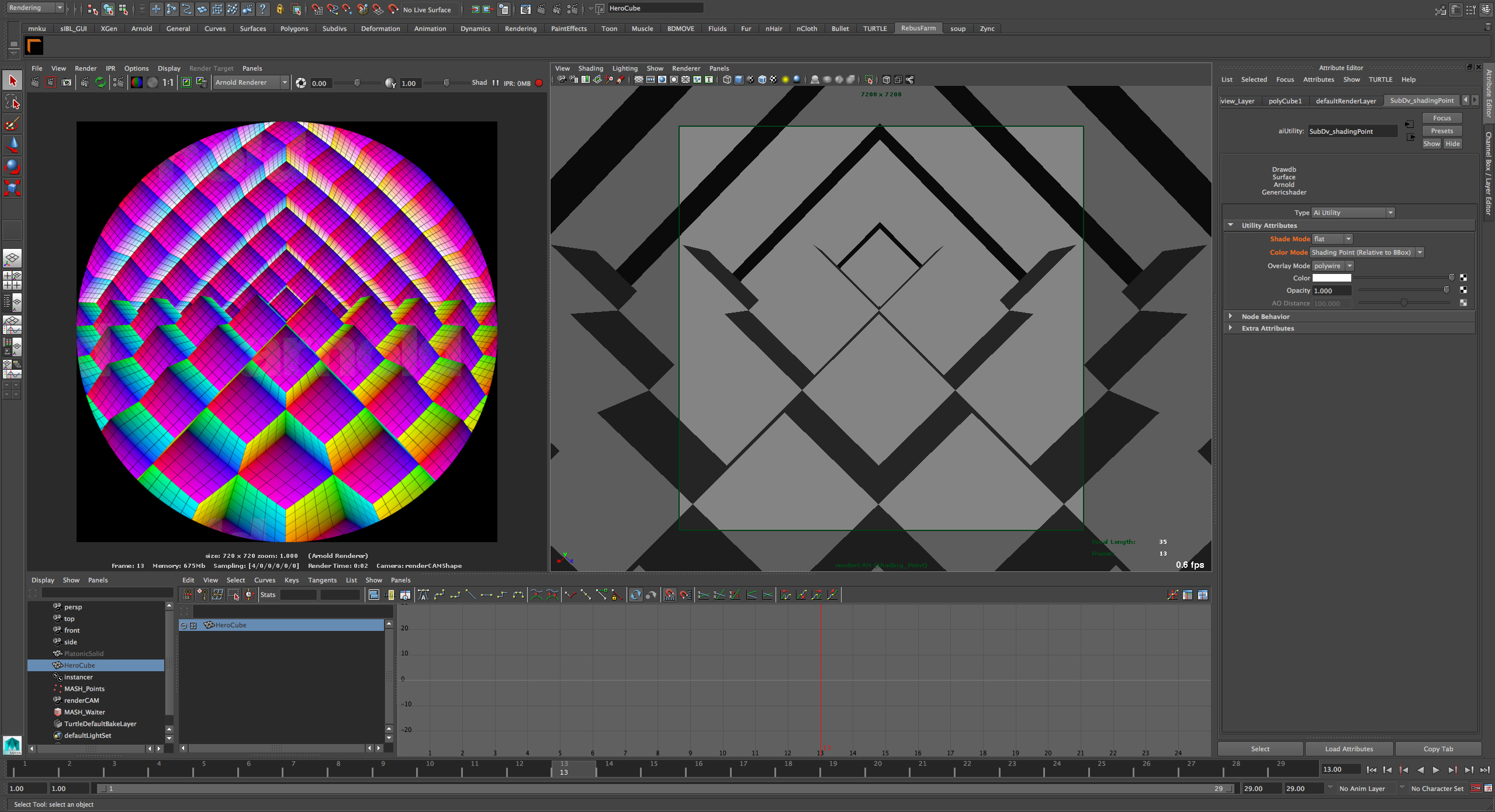
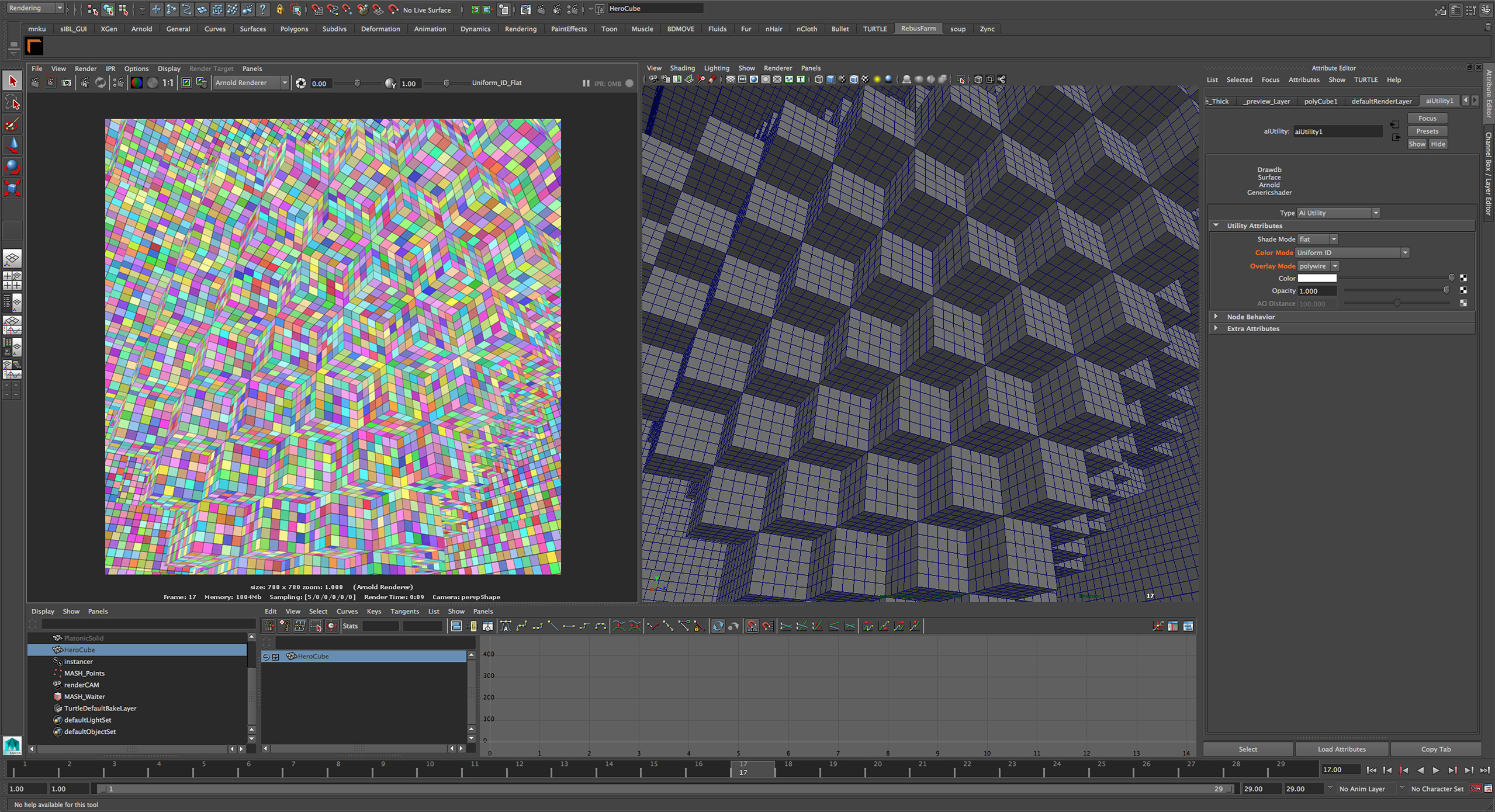
Warping Perception
–– 04Warping Perception with Fisheye Lenses: One of Munko's favorite features in Arnold is the ability to manipulate the types of cameras - specifically the amazing Fisheye Camera option. As a director, Munko has always been obsessed with the profound effects the experimental camera optics can have on an image, as evidenced in the Eric Prydz and Tycho music videos.
With the Fisheye lens and the various Field of View settings, Munko could transform somewhat basic Geometry into perceptual warping, Mars-1 inspired geometric aberrations. In addition, but throwing the FOC beyond 360 degrees, insane reverse warping could occur, which gave way to some incredibly dynamic visual techniques.
With the Fisheye lens and the various Field of View settings, Munko could transform somewhat basic Geometry into perceptual warping, Mars-1 inspired geometric aberrations. In addition, but throwing the FOC beyond 360 degrees, insane reverse warping could occur, which gave way to some incredibly dynamic visual techniques.
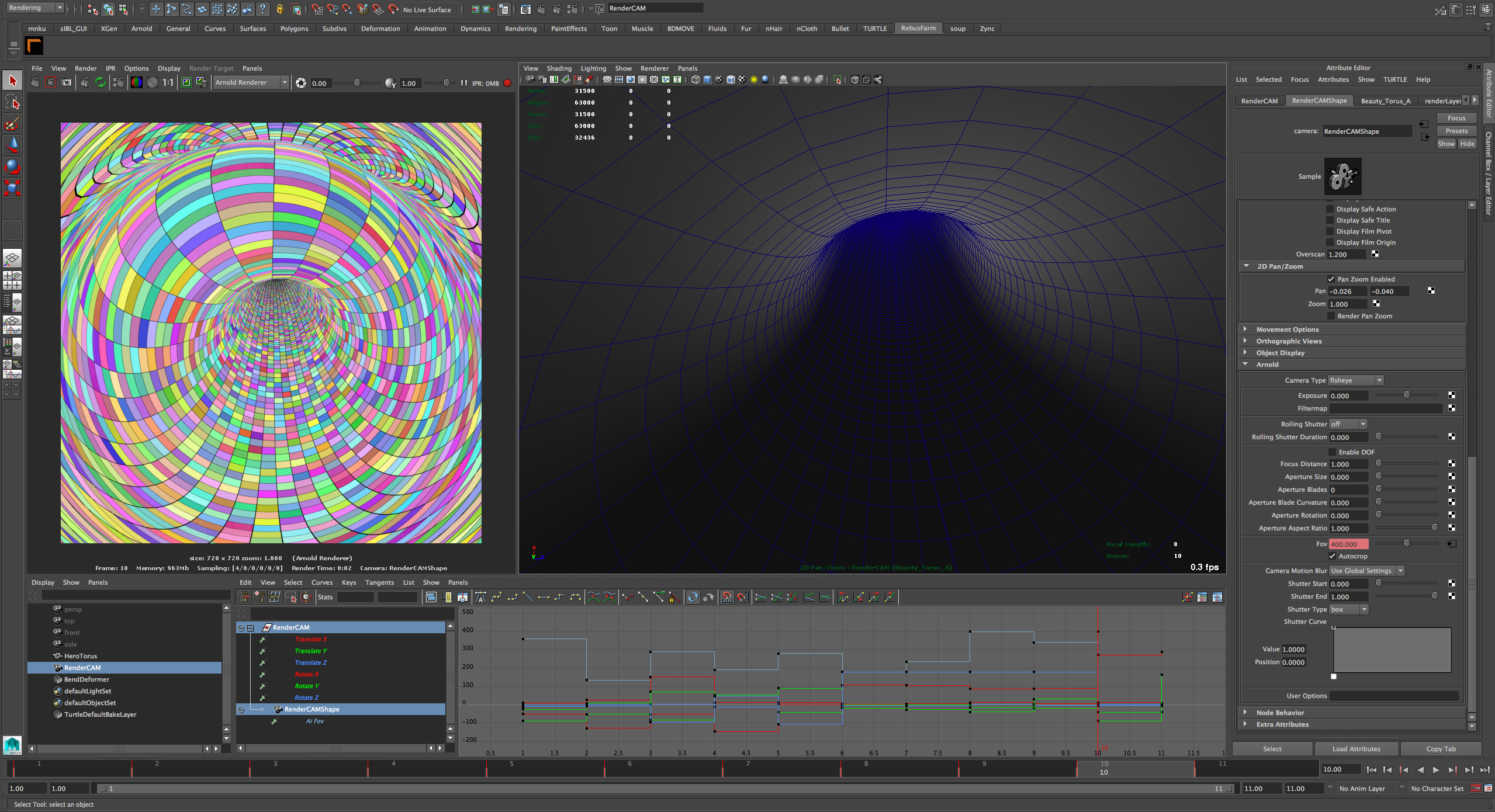
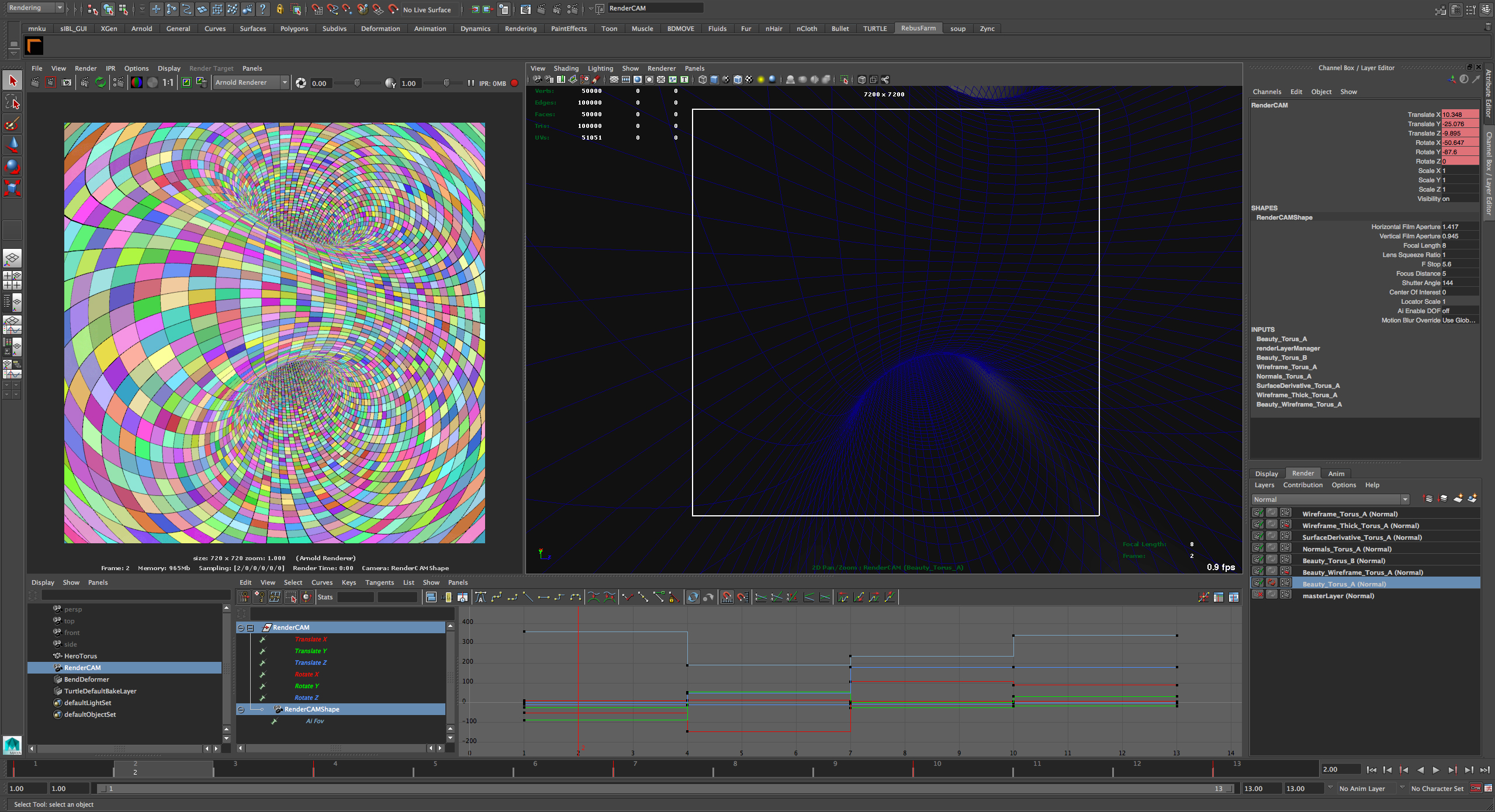
Additional Complexity
–– 05
Additional Complexity with MASH: After getting very bored with what the traditional primitives in Maya could offer from an aesthetic point of view, it was time to take it to the next Level. So Munko learned the amazing MASH plugin to soothe his woes, particularly the Voxel Fill mode within the Distribute Node which allowed him to create some amazing fractal-inspired forms.
The enabling thing about MASH is the way it generates geometry, using adjustable Instance objects to drive whatever form or arrangement you desire. What this allowed was an extreme iteration phase as the SubDivisions for the hero instance could be infinitely modified and would hugely affect the resulting geometry, which in turn would drive the Utility shaders color assignments etc.
The enabling thing about MASH is the way it generates geometry, using adjustable Instance objects to drive whatever form or arrangement you desire. What this allowed was an extreme iteration phase as the SubDivisions for the hero instance could be infinitely modified and would hugely affect the resulting geometry, which in turn would drive the Utility shaders color assignments etc.

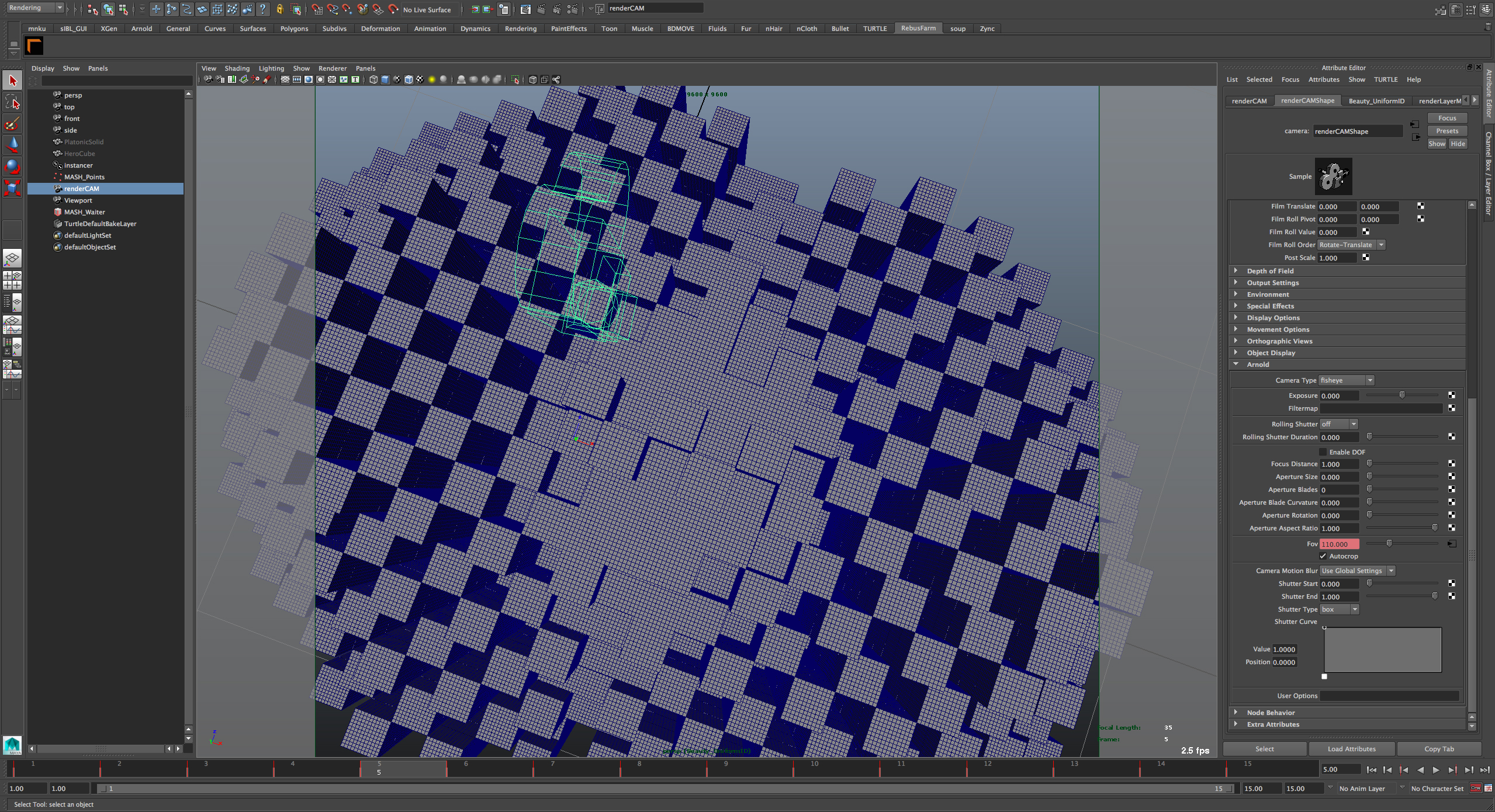
Color Grading
–– 06
Color Grading in Lightroom: One of Munko's favorite programs these days is Adobe Lightroom as he's been diving deep into his own personal photography and advanced grading techniques. This particular series demanded heavy color-grading, as the output renders from Arnold came out as a Rainbow of tones and needed some serious design lotion.
Fortunately, Lightroom was used to isolate each tonal group, and allowed for custom palettes to be created and applied to various artworks in batches for quick viewings and iterations. The degree of control and flexibility Lightroom offered was essential for the tonal palettes created, and raised the visual definition of the series to a much higher bar.
Fortunately, Lightroom was used to isolate each tonal group, and allowed for custom palettes to be created and applied to various artworks in batches for quick viewings and iterations. The degree of control and flexibility Lightroom offered was essential for the tonal palettes created, and raised the visual definition of the series to a much higher bar.

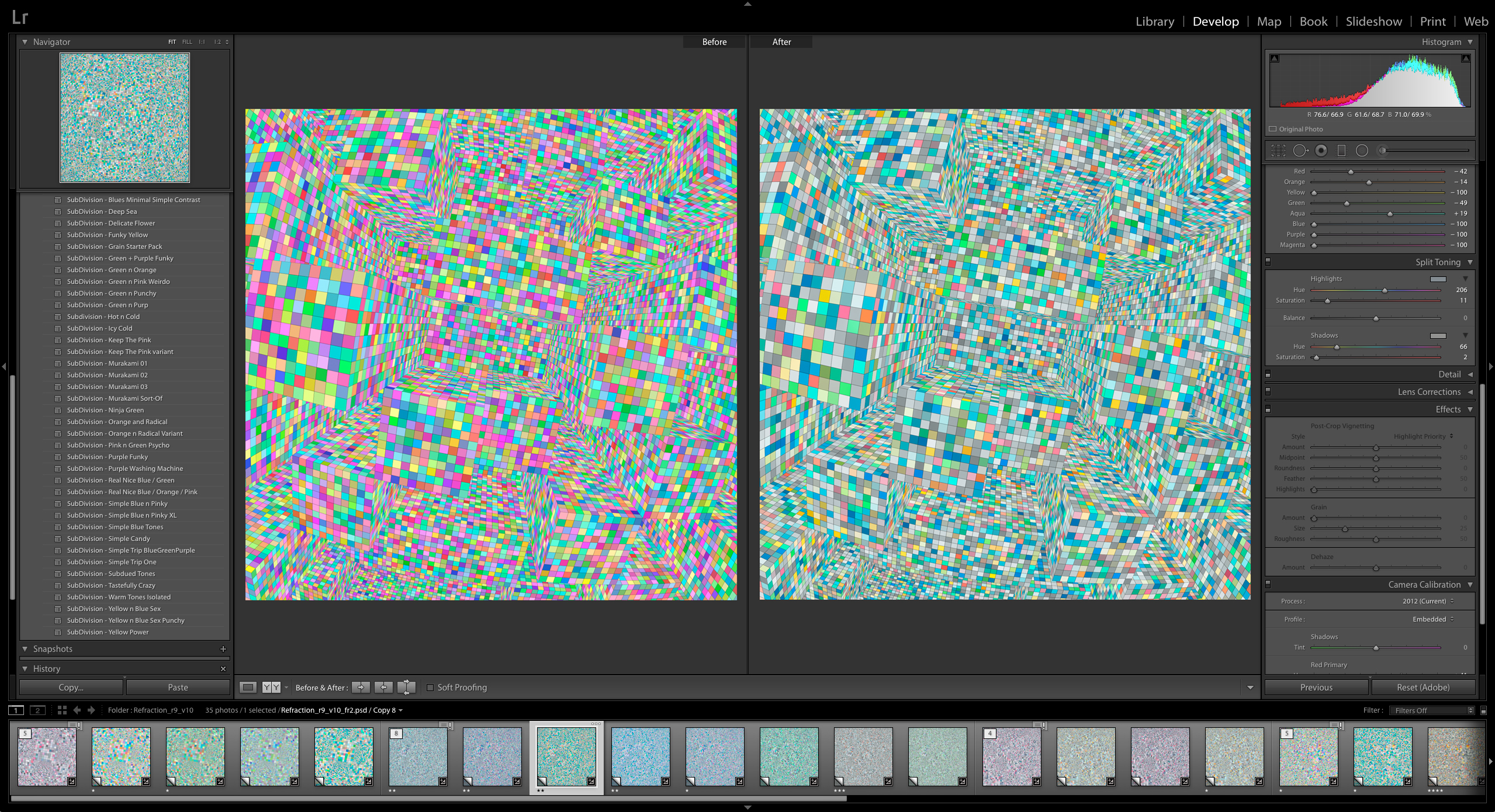
Psycho Touches
–– 07
Final ‘Munko's a Total Psycho’ Touches: Ok, so here's a little rant about designers - we have an illness. We see detail that normal people don't care about. We are constantly admonished for being particular and too visually specific. We critique everything and anything, endlessly - and that effects us emotionally. It's actually a beautiful thing, but it's an illness.
However, what this illness fosters is a general dissatisfaction with the generative palettes produced by the Utility Shader, which motivates one to manually select and change the tones for tooooo many of square colors -- yes somewhat insane, yet very satisfying to get it all tight. To celebrate this illness, Munko has included a snapshot of this final-touches phase in action - enjoy.
However, what this illness fosters is a general dissatisfaction with the generative palettes produced by the Utility Shader, which motivates one to manually select and change the tones for tooooo many of square colors -- yes somewhat insane, yet very satisfying to get it all tight. To celebrate this illness, Munko has included a snapshot of this final-touches phase in action - enjoy.
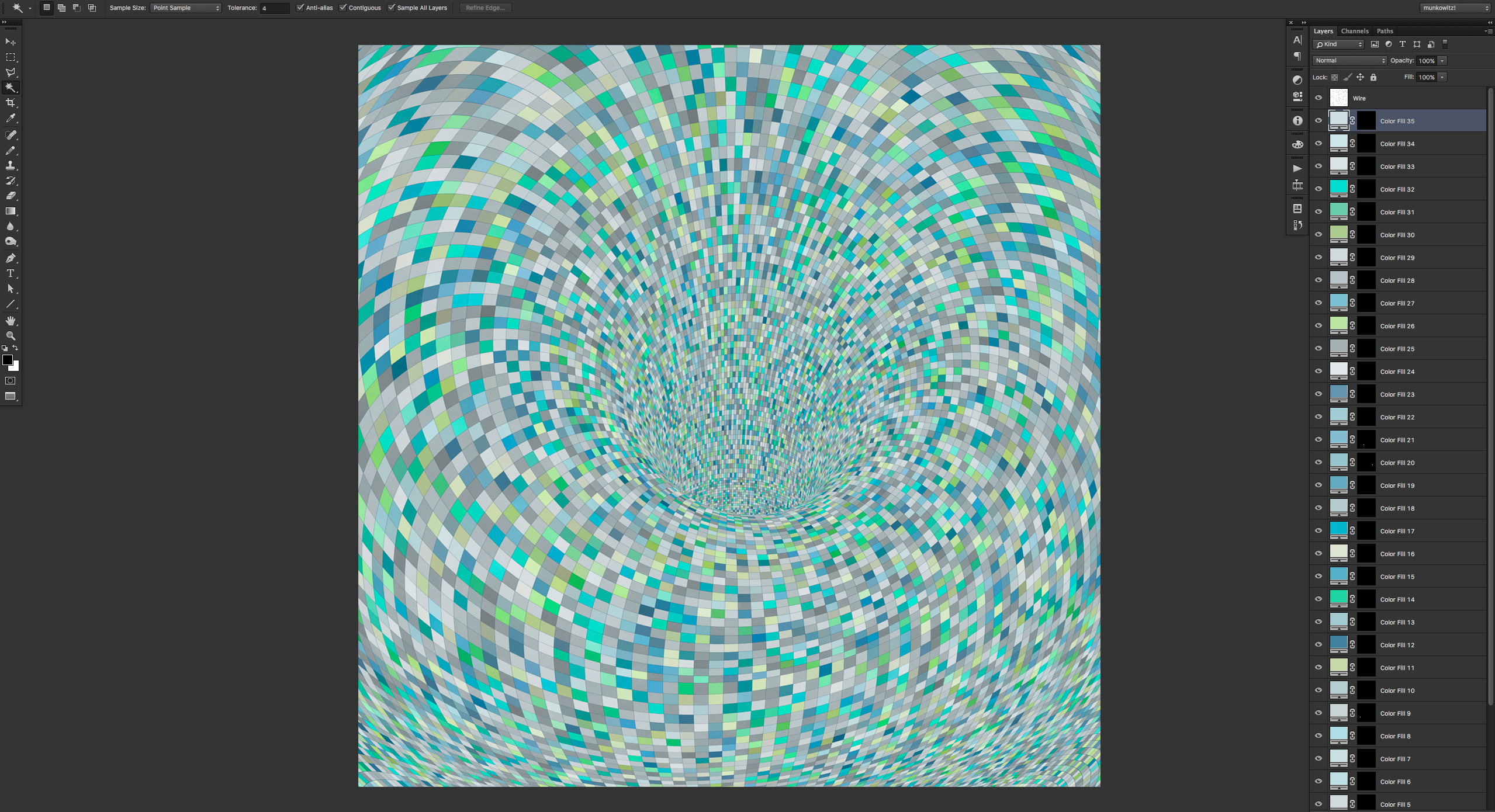
Power Details
–– 08Wanna Lick the Resolution + Meow the Details: The final prints are a ridiculous 15,000 x 15,000 pixel resolution, which print close to 48 inches at 300dpi. As a consequence, making so many files at that resolution was quite the ballAche and required RAM and storage upgrades on the workstation.
However, whining aside the good thing about making files so large is the opportunity for those sweet 100% crops, of which Munko wants to share his favorites - maybe he should release some 5k Wallpapers for all those desktops out there needing some graphical sexy-time.
However, whining aside the good thing about making files so large is the opportunity for those sweet 100% crops, of which Munko wants to share his favorites - maybe he should release some 5k Wallpapers for all those desktops out there needing some graphical sexy-time.









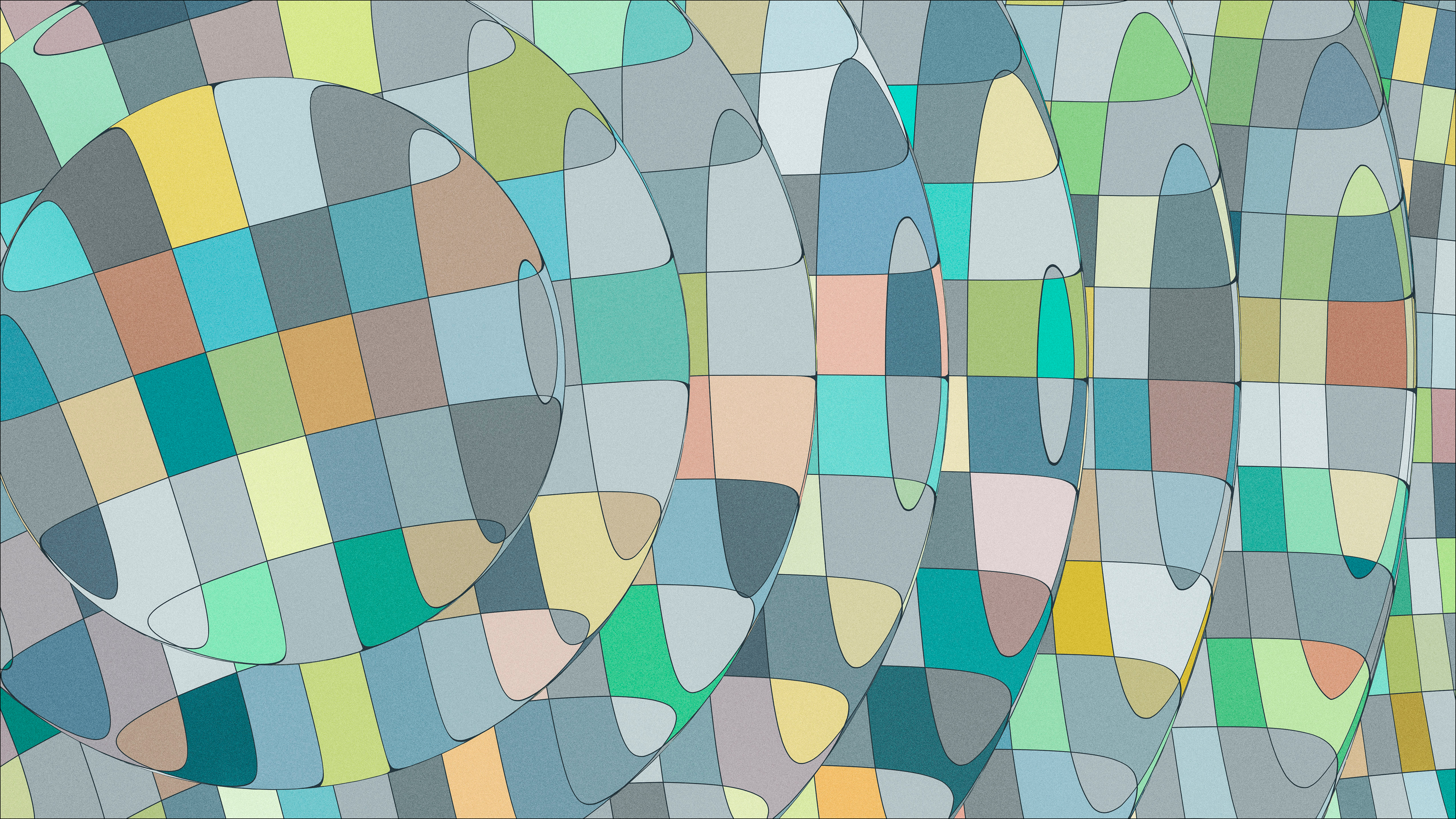
CinaArt.com
–– Art Prints for SaleHigh-Quality Prints in Collaboration With CinaArt: One of the most exciting ingredients of this release is the collaboration with the legendary Graphic Designer Michael Cina, who is a dear friend and one of Munko's favorite designers on earth. Cina has started an amazing print store at CinaArt.com, where the SubDivision Series will be sold as incredibly high-quality prints using the finest ink and paper, with Munko being the first guest artist on the platform.
• Archival pigment print on premium ultra smooth 100% cotton rag paper
• Each print is accompanied by a certificate hand-numbered and signed by the artist
• All prints include a ½" to 1” white border on all sides
CinaArt Print Details
• Archival pigment print on premium ultra smooth 100% cotton rag paper
• Each print is accompanied by a certificate hand-numbered and signed by the artist
• All prints include a ½" to 1” white border on all sides

